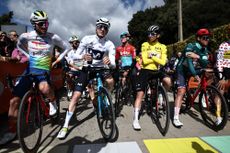Can you get fit in 30-minutes? These three cycling workouts say 'yes, you can!'
If you’re very limited on time, getting sweaty in one of these intense training sessions will build and maintain your fitness
- (opens in new tab)
- (opens in new tab)
- (opens in new tab)
- Sign up to our newsletter Newsletter
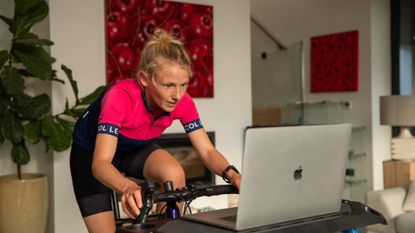

Putting on your shoes and helmet to go for the long ride in the great outdoors isn’t always possible and on those occasions when you’re time crunched it’s much, much better to pack in a short and sweaty workout to boost your fitness, than to tell yourself you’ll just try and get out tomorrow.
Half an hour is just about enough time for a quick effective workout and so when you have limited spare time in a week – or just very short windows for packing in a training session – try one of these three 30-minute indoor training sessions designed by British Cycling Level 2 Coach and Training Peaks Level 2 Coach, Tim Phillips of Catenary Cycle Coaching (opens in new tab).
Go hard and you’ll reap the benefits .“As these workouts are short, they are also intense,” Phillips notes. “Do them full on and you should be pretty tired afterwards.”
A warm up before cycling prepares your body for the efforts ahead. But in order to pack in enough work in the higher zones, Phillips has had to keep the warm ups and cool downs short in these sessions detailed below.
“I would usually have 10 minutes minimum for both, so if you do have an extra few minutes, it is worth spending longer on the warm up at least,” Phillips recommends.
Is cycling for 30-minutes a good workout?
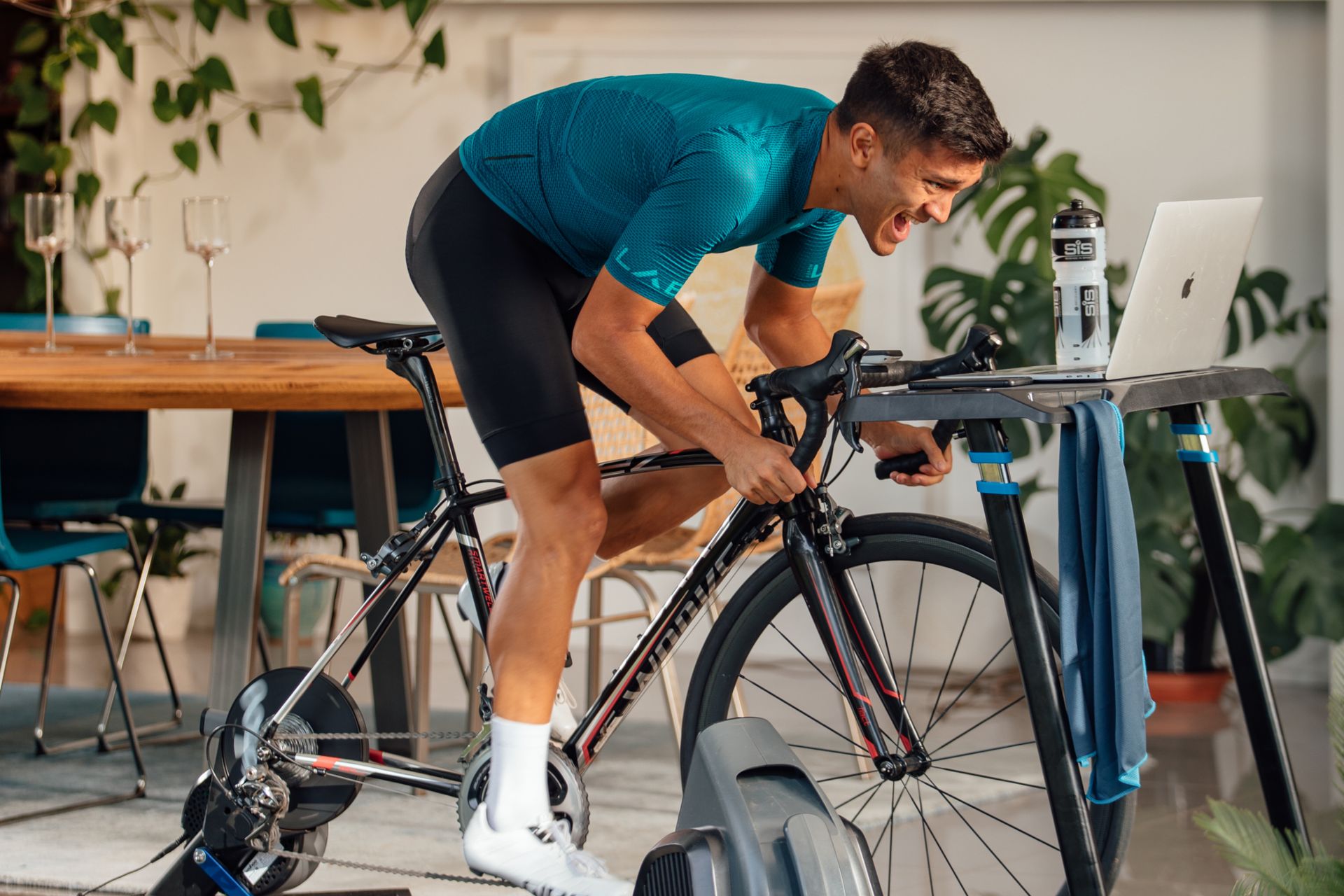
Improving your fitness requires frequent training but with sufficient recovery to allow for the adaptation process to take place. How long is ‘long enough’ for a good workout also feeds into the question of ‘how often should you cycle to get fit?’
Regular, short rides are an effective way of boosting your fitness. Splitting your time across several 30-minute sessions throughout the week is better than doing one single long ride at the weekend, for example.
If you are very limited on time, then just three sessions of this HIIT (high-intensity interval training) work a week is the best way to improve your overall fitness. The short length of these sessions can make it easier to fit in between your various other day-to-day activities.
“These short workouts are ideal if you have limited time, during a lunch break for example, and will give a useful [training] effect, but your fitness will plateau if this is all that you do,” Tim warns. Putting time into the lower (easier) training zones is important for building endurance and upping your training volume – don’t be tempted to try and do five HIIT sessions in a week, your body won’t be able to go that hard that often.
30 minute cycling workouts: power versus heart rate
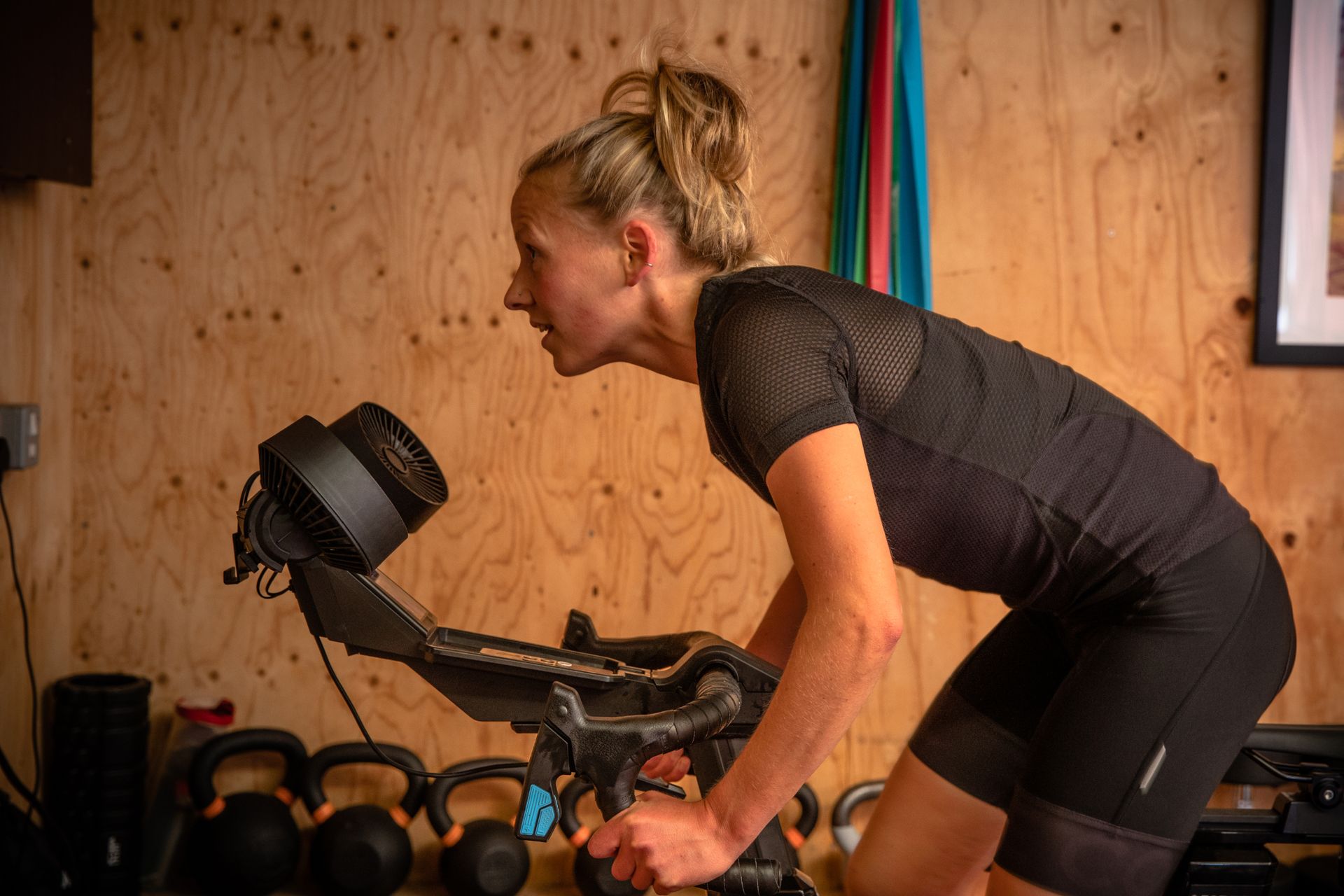
The 30-minute sessions provided below can be done both with and without a power meter.
If you are using a power meter, the workouts can be downloaded and pushed to your device (or the indoor training app) you prefer to use, so it’s easy to follow. The intervals are based on a % of your Functional Threshold Power (FTP), and here you can find out how to set your FTP.
For those who don’t own a power meter, the sessions are based on a combination of heart rate training zones and RPE (rate of perceived exertion).
A heart rate monitor can be used to ensure that structured intervals are ridden at the intended intensity as it measures your body’s response to the effort you’re putting in. But your heart rate has a delayed response, which means that training with a power meter is a much more useful way of measuring shorter efforts as it can tell that you’ve quickly shifted your output, basically a power meter better identifies that you’ve gone from hard to easy, and then back to hard again.
Hydration, caffeine consumption, overall muscle fatigue and temperature can also all have an effect on your heart rate, and so while it’s useful for monitoring your overall response to training load, it’s less useful for hitting targets on the day.
Heart rate can be used for the gradual warm up at the start, but for these high intensity intervals it’s better to base the intensity on RPE. On a scale of 0 to 10, 1 is a easy gear, gentle recovery and 10 is an all-out teeth-gritting effort.
Let’s get into the sessions…
#1 VO2max: 3x4 Fast Start
To download the session click on the embedded graph above.
“This workout targets your VO2max - your body’s limit of its ability to utilise oxygen to power your muscles,” Phillips explains.
“This is a shorter variation of classic VO2max intervals, but in this case the first 30 seconds should be in zone 6, the idea being to use up your anaerobic battery quickly and leaving you running on aerobic energy alone.
“Focus on a smooth cadence over 95 rpm for the intervals (higher for the initial effort), and keep the effort nice and light for the recovery so you are ready for the next effort.”
Heart Rate / Rate of Perceived Exertion version
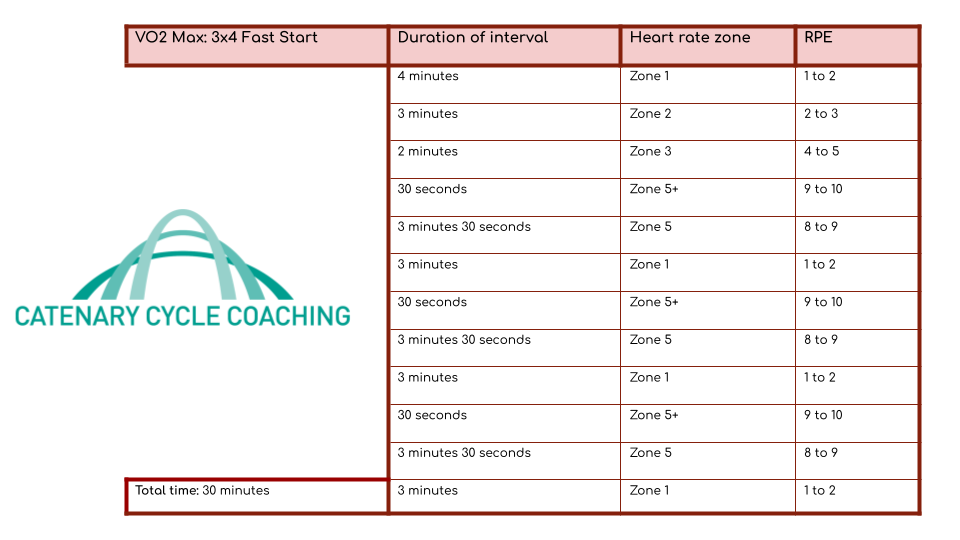
“The intervals in this workout are too short for heart rate to be usable as a pacing guide, so ignore it once you have warmed up - it almost certainly won’t reach zone 5 during these efforts," says Phillips.
“The first 30 seconds should be flat out and then try and pace the 3.5 minutes to be as hard as you can go over that period.”
#2 Anaerobic: 6x1 (reducing recovery)
To download the session click on the embedded graph above.
“This workout targets your anaerobic capacity - your body’s ability to output power for short durations without using oxygen,” Phillips explains.
“This version adds an extra challenge with the reducing recovery time, meaning you will be more fatigued when you start the later ones.
“Each effort should be about as hard as you can make them (80 to 90 per cent effort for the first two and 100 per cent thereafter) aiming to keep them all fairly even in terms of average power.
“Drive hard for the first 10 to 20 seconds and then try and hold on, keeping a good fast cadence (ideally 95 plus rpm) and your body as strong and stable as possible.
“If you do this right the last 10 to 20 seconds will feel very long - try and hold onto your form and not let the power drop too much.”
Heart Rate / Rate of Perceived Exertion version

“The intervals in this workout are far too short for heart rate to be usable as a pacing guide, so use perceived effort once you have warmed up,” Phillips explains.
“Your heart rate will rise during the one minute efforts but won’t reach the set value.
“How quickly it drops after each effort is a good measure of your aerobic fitness."
#3 Sprint: 20s/10s Tabata
To download the session click on the embedded graph above.
“This workout targets your sprint power and recovery, using short maximal efforts with very short recoveries,” Phillips explains.
“The sprint efforts should be all out, keep to 80 to 90 per cent effort for the first few when it feels easy,” Phillips recommends.
“Keep in the same gear during each interval, out of the saddle initially to get on top of the gear and then aiming towards a cadence of 100 plus rpm.
“Change down a couple of gears to ease off for the short recoveries, then change up and go again - you may find the power you can reach declines through each set, but do the best you can.”
Heart Rate / Rate of Perceived Exertion version
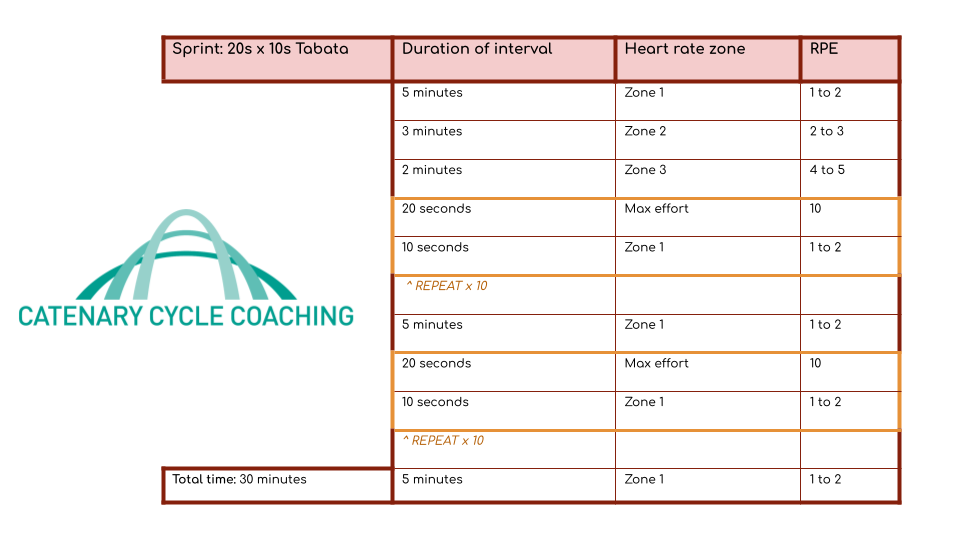
“The intervals in this workout are far too short for heart rate to be usable as a pacing guide, so ignore it once you have warmed up,” Phillips recommends.
Are you looking to follow a more structured programme throughout the week? We have training plans that are designed for those with different goals in mind, whether you're looking to build endurance to take on your first 100 mile ride or compete in a road race.

Thank you for reading 10 articles this month* Join now for unlimited access
Enjoy your first month for just £1 / $1 / €1
*Read 5 free articles per month without a subscription

Join now for unlimited access
Try first month for just £1 / $1 / €1

I’ve been hooked on bikes ever since the age of 12 and my first lap of the Hillingdon Cycle Circuit in the bright yellow kit of the Hillingdon Slipstreamers. For a time, my cycling life centred around racing road and track.
But that’s since broadened to include multiday two-wheeled, one-sleeping-bag adventures over whatever terrain I happen to meet - with a two-week bikepacking trip from Budapest into the mountains of Slovakia being just the latest.
I still enjoy lining up on a start line, though, racing the British Gravel Championships and finding myself on the podium at the enduro-style gravel event, Gritfest in 2022.
Height: 177cm
Weight: 60–63kg
-
-
 'It's likely to be very dangerous' - Inside Paris-Nice stage six, the race that never was
'It's likely to be very dangerous' - Inside Paris-Nice stage six, the race that never wasFriday's stage was first shortened to 80km, then called off completely thanks to "exceptionally violent winds"
By Adam Becket • Published
-
 Government budget cuts make net zero target ‘impossible’ say cycling groups
Government budget cuts make net zero target ‘impossible’ say cycling groupsCuts of hundreds of millions of pounds were buried alongside delays to HS2 rail project
By Vern Pitt • Published
